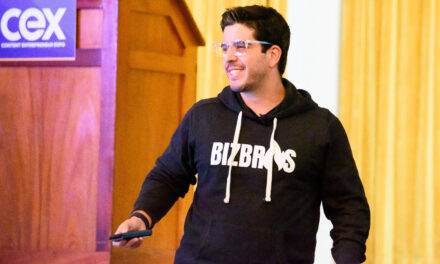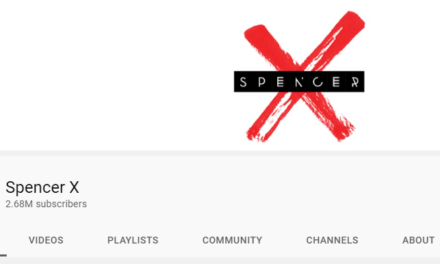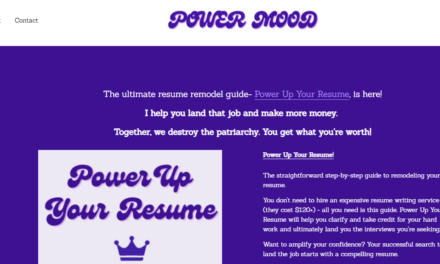Are content creators better off selling sponsorship deals or advertising?
That question prompted a recent conversation in The Tilt community. The answer? Sponsorships, according to Joe Pulizzi, founder of The Tilt.
While the choice is an easy one-word response, the why, what, and how of sponsorships are a little more complex. First, let’s look at why sponsorships usually beat advertising, then go deeper into the what and how to add this profitable revenue stream to your content business.
Sponsorships are better than ads as revenue streams for #ContentEntrepreneurs, says @TheTiltNews founder @JoePulizzi. #CreatorEconomy Share on XDifference between advertising and sponsorships
Justin Moore, founder of Creator Wizard, explains how he views sponsorships vs. advertising.
“Advertising is more detached from the creator,” he says. Creators who operate on social media platforms don’t even have any control over the ads their audience sees, whether it’s a pre-roll video on YouTube or a Facebook ad below their video.
Sponsorships are more closely connected to the creator. Brands work directly with the creators, often to reach their audiences with a testimonial or recommendation about the company’s product, Justin explains. In these cases, the creator usually develops the sponsored content, too.
Unlike ads, sponsorships connect the brand and the creator, says Justin Moore of @CreatorWizard. #ContentBusiness Share on XI’ll add another thought: Even if your content brand doesn’t have your face at the forefront, sponsorships can be more beneficial. For example, brands could pay to sponsor individual editions of your newsletter or podcasts. Sure, you could accept multiple advertisements for your newsletter or podcast. Still, they aren’t likely to bring in the same revenue, disrupt the reading or listening experience, and require more recordkeeping. Or a brand could pay to sponsor a content product like an online course – something that would be difficult, if not impossible, for advertisements.
How content creators can make more money from sponsors
“Selling a sponsorship instead of an ad makes it more than just about the ad. It’s more like a partnership. You can package many more benefits than just the ad’s performance,” Joe says.
Unfortunately, most creators still take the transactional ad-like approach when they pitch brands to do deals, Justin says, noting it’s the biggest sponsorship mistake he sees creators make.
He says creators should ask this question first to signal to brands you know why sponsorship deals are more attractive: What would success look like for this campaign?
#ContentEntrepreneurs should ask the brand what success looks like for the potential sponsorship and tailor their proposal to deliver that, advises Justin Moore of @CreatorWizard. #CreatorEconomy Share on X“No one asks this,” Justin says. Instead, creators just send over a media kit and say, ‘Here are my rates. Here’s what I charge for one or two posts.’”
By indicating you want to know what the brand wants, you shift the conversation. Justin says it has a twofold benefit – you endear yourself to the brand (or agency), and you can learn in their own words what’s worked, what hasn’t, what they see as success, etc.
With that information, you can tailor your proposal. For example, if a brand says its goal is to acquire exclusive content created by you, don’t craft a pitch detailing the number of posts you’ll publish about them on your accounts.
“You’ll make so much more money if you truly understand what the brand is trying to accomplish,” says Justin, who writes a newsletter devoted to sponsorships and creators.
Content creators can make so much more money from sponsorships when they understand what brands want to accomplish, says Justin Moore of @CreatorWizard. #Revenue Share on XWhat to consider when pricing sponsorships
Pricing is both an art and a science. It’s difficult to find standard rates because so many factors may be involved in the deal. An ad is easier to price because it’s based on the audience size, Joe says, noting it’s often between $10 to $30 per 1K audience members for consumer businesses, while the rates for business-to-business brands depend on that market’s buying power.
Justin created the DUE framework to help creators ensure they incorporate all the relevant elements when they propose and execute sponsorship deals:
- Deliverables – what are you to you create in what format(s) to be published where and how often
- Usage rights – what does the brand what to do with this content (for example, if they want to repurpose your branded post on other channels or embed it on their site, you should charge more)
- Exclusivity – are you limited in working with other brands in this sector, how long
By identifying all these factors, you can create a proposal – and ultimately a contract – that clearly outlines all the specifics and allows you to charge a price commensurate with those expectations.
TIP: Don’t be afraid to ask about the budget range for the project when you discuss their goals. If they share, that can be a helpful starting point to understand if it doesn’t make sense to move forward (too little budget) or if you could put together a high-value project (more budget than you typically would have).
TIP: Someone shared this calculator site says: “Newsletter Ad Calculator: How to set your email newsletter’s sponsorship price.” While we haven’t tested it, it can be helpful to identify ballpark rates.
One more thought on sponsorships
Though you shouldn’t just send a media kit to secure profitable sponsorships, brands will want to know the details usually included them, such as:
- Content products
- Distribution platforms
- Audience size
- Sector/area of interest
- Engagement rates (impressions, open rates, click-through rates, etc.)
- Results and/or testimonials from other brands you’ve worked with
By taking a deliberate, proactive approach to knowing what brands want and outlining how your content business can help them achieve that, you’ll set yourself apart from other content creators. By doing that, you’ll be able to sell more sponsorships at a higher rate than if you adopt a transactional ad-like strategy.
Dive deeper into the money lessons for FREE by watching the revenue track sessions at Creator Economy Expo. In one of them, Justin Moore talks about how to craft a sponsorship pitch no brand will ignore. Sign up today to access the sessions from every track and all the keynotes at CEX.
About the author
Ann regularly combines words and strategy for B2B, B2C, and nonprofits, continuing to live up to her high school nickname, Editor Ann. An IABC Communicator of the Year and founder of G Force Communication, Ann coaches and trains professionals in all things content. Connect with her on LinkedIn and Twitter.










